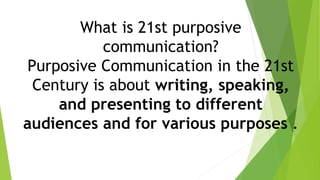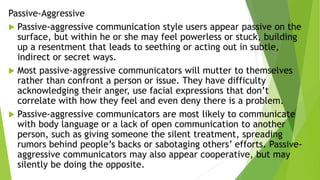Purposive communication is the practice of effectively conveying messages to different audiences for various objectives, including informing, expressing feelings, and influencing others. The document explains the elements and types of communication, emphasizing the importance of verbal and non-verbal cues, tone, and context in message delivery. It outlines various communication styles, purposes, and strategies for improving communication skills.














































































































